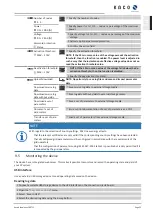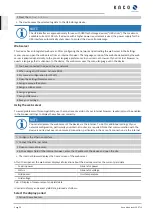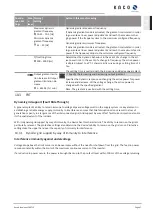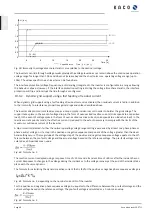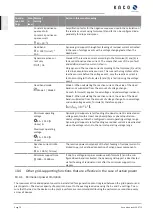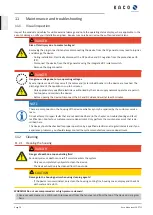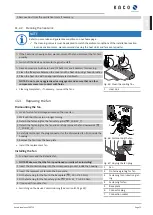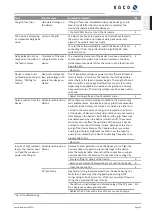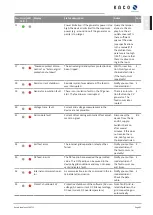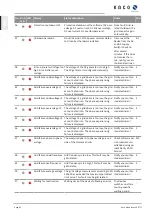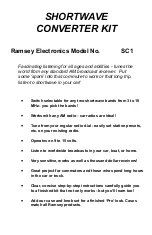
Country-
spec. Set-
tings
Men
u
level
Display/
Setting
Action in this menu/meaning
Maximum dynamic
gradient frequency
50.22 – 70.5 [Hz]
Minimum dynamic
gradient frequency
45 – 50 [Hz]
Dynamic gradient maximum frequency:
If dynamic gradient mode is activated, the gradient is calculated in order
to guarantee a linear power adjustment and reach the maximum char-
ging power if the frequency rises to the maximum configured frequency.
Dynamic gradient minimum frequency:
If dynamic gradient mode is activated, the gradient is calculated in order
to guarantee a linear power adjustment and reach the maximum feed-in
power if the frequency drops to the minimum configured frequency.
P(f) settling time
200 – 2000 [ms]
Determines the dynamic behaviour in the event of a change in the act-
ive power limit. In the event of a change in frequency, the active power
is altered subject to a PT-1 characteristic curve using a settling time of 5
Tau.
The settling time is overlaid with the increasing and decreasing gradient.
4
1
2
3
4
Output gradient limita-
tion increase & Output
gradient limitation de-
crease
1 - 65534 [% / min]
F
Specify the increasing and decreasing output gradient.
Specifies the dynamic response on changing the active power for power
increase and decrease. With a voltage change, the active power is
changed with the specified gradient.
Note: The gradient is overlaid with the settling time.
10.3
FRT
Dynamic grid support (Fault Ride Through)
A generator plant’s ability to remain immune to voltage dips and voltage swells in the supply system is a key element in
establishing a reliable energy supply. Immunity to interference ensures that brief disruptions do not result in a loss of
generation capacity in a larger area of the interconnected grid. Grid support by way of fast fault current injection also lim-
its the spatial extent of the incident.
With its dynamic grid support by way of immunity, the device has this characteristic. The ability to remain on the grid is
particularly relevant. The protective settings also determine the device’s ability to remain on the grid or not. Protective
settings take the upper hand over the capacity of immunity to interference.
10.3.1
Dynamic grid support by way of immunity to interference
Interference immunity against undervoltage
Voltage drop above the limit curve in can be overcome without the need for shutdown from the grid. The feed-in power
remains constantly within the limits of the maximum continuous current of the inverter.
If a reduction in power occurs, the power is brought back up to the pre-fault level within 100 ms of the voltage returning.
Kaco blueplanet 29.0TL3
Page 67
EN

